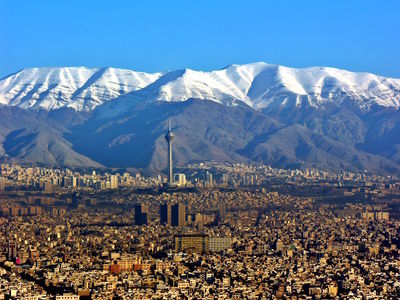Gynopedia needs your support! Please consider contributing content, translating a page, or making a donation today. With your support, we can sustain and expand the website. Gynopedia has no corporate sponsors or advertisers. Your support is crucial and deeply appreciated.
Tehran
OVERVIEW
Contraception (Birth Control)
General Note: There are many types of contraceptives, also known as "birth control," including IUDs, oral contraceptives, patches, shots, and condoms, etc. If you would like to view a full list, click here.
Laws & Social Stigmas
In Iran, you can purchase contraception (birth control) without a prescription.[1] According to a 2015 report, 76.6% of Iranian women (who are of reproductive age and married/in unions) use some form of contraception. The most common forms of contraception are withdrawal/"the pull out method" (16.9%), birth control pills (15.6%), female sterilization (14.8%), male condoms (13.7%) and IUDs (8.4%). Overall, it is estimated that 6.5% of Iranian women (who are of reproductive age and married/in unions) have unmet family planning needs, a rate that is lower than many Western European countries.[2]
Historically, the Iranian government has frequently changed its views on family planning. After the Iranian Revolution in 1979, family planning clinics were closed down and the Iranian government encouraged population growth. The price of birth control pills was inflated from one hundred rials to one thousand rials per pack and the newly formed Iranian Marriage Foundation encouraged marriage by providing newlyweds with furniture. The marriage age was lowered to nine years old for girls and fourteen years old for boys, and polygamy was legalized. However, in 1989, the government's policies began to rapidly change. The war with Iraq had ended, Ayatollah Khomeini had died, and the new leaders, Supreme Leader Ali Khamenei and President Akbar Hashemi Rafsanjani, recognized that there was a population growth problem.[3] The government launched a new campaign to encourage families to have a maximum of two children under the slogan, "One is good. Two is enough."[4] Furthermore, Iran's Health Ministry began providing free contraceptives, including condoms, pills, implants, IUDs and sterilization. By 1993, the government required that both college students and engaged couples classes on family planning. An Iranian condom factory reportedly produced more than 70 million condoms per year.
The last decade has seen further shifts in family planning policy. In 2006, President Ahmadinejad declared that he wanted the population to increase from 70 million to 120 million and that having babies was the "main mission" of women. Many Iranian leaders were quoted as saying that population control measures belonged in the past. During this time, the government cuts its budget for subsidized condoms and family planning services, increased paid maternity and paternity leave and tried to make female or male sterilization illegal.[5]
What to Get & Where to Get It
Costs
Emergency Contraception (Morning After Pill)
Important Notes: Emergency contraception may prevent pregnancy for three days (72 hours) and sometimes five days (120 hours) after unprotected sex. Take EC as soon as possible after unprotected sex. If you don't have access to dedicated EC, oral contraceptives can be used as replacement EC, but remember the following: 1) Only some contraceptives work as EC 2) Different contraceptives require different dosages and time schedules to work as EC 3) You must only use the first 21 pills in 28-day packs and 4) They may be less effective than dedicated EC. For general information on emergency contraceptives, click here and here.
Laws & Social Stigmas
In Iran, emergency contraception (morning after pill) is available without a prescription.[6]
What to Get & Where to Get It
- In Iran, you can purchase emergency contraception (morning after pill) without a prescription at pharmacies. You'll find that the brands being sold are typically produced by Iranian pharmaceutical companies. The most common brands are Longil and Ovocease.
Costs
Sexually Transmitted Infections (STIs/STDs)
Important Notes - Learn about PEP and PrEP: If you think that you've been recently exposed to HIV (i.e. within 72 hours), seek out PEP (Post-Exposure Prophylaxis). It's a month-long treatment to prevent HIV infection after exposure, and it may be available in your city. Take PEP as soon as possible. For more information, click here. If you are at risk of HIV exposure, seek out PrEP (Pre-Exposure Prophylaxis). It's a daily oral pill that can prevent HIV infection before exposure. To learn more about PrEP, click here.
Laws & Social Stigmas
What to Get & Where to Get It
Testing Facilities
Support
Costs
Medications & Vaccines
Laws & Social Stigmas
What to Get & Where to Get It
Costs
Menstruation
Note: In addition to pads and tampons, you can also use menstrual cups and menstrual underwear for your period. To learn more about menstrual cups, click here. To learn more about menstrual underwear, click here.
Laws & Social Stigmas
What to Get & Where to Get It
Costs
Gynecological Exams
Laws & Social Stigmas
What to Get & Where to Get It
Costs
Pregnancy
Laws & Social Stigmas
What to Get & Where to Get It
Costs
Abortion
Important Note: There are two main types of abortions: medical (also known as the "abortion pill") and surgical (also known as "in-clinic"). For medical abortions, you take a pill to induce abortion. For surgical abortions, a procedure is performed to induce abortion. For general information about medical and surgical abortions, click here.
Laws & Social Stigmas
What to Get & Where to Get It
Costs
Advocacy & Counseling
Laws & Social Stigmas
What to Get & Where to Get It
Costs
List of Additional Resources
References
- ↑ Global Oral Contraception Availability
- ↑ [http://www.un.org/en/development/desa/population/publications/pdf/family/trendsContraceptiveUse2015Report.pdf Trends in Contraceptive Use Worldwide 2015]
- ↑ Family Planning in Iran
- ↑ Iran Once Offered Free Birth Control To All Its Citizens, And It Was Amazing
- ↑ Family Planning in Iran
- ↑ EC Status and Availability: Iran
